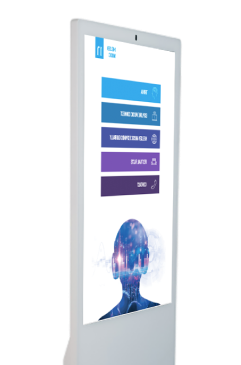

Event Solutions

Our Work

The Basics of Touchscreen Kiosks Rentals
People use touchscreen kiosks on a daily basis — on their cellphones, tablets, some laptops, and even their desktop computer screens. We see touch screen table directories and use touchscreens to withdraw money from ATMs almost everywhere and in a variety of situations. And the younger generation is following suit: the percentage of children who use a touchscreen in their first year of life is rapidly approaching 50%, and global touchscreen kiosks shipments more than doubled between 2012 and 2016. That's why you're investing in interactive touchscreen kiosks for your business – they're a cost-effective solution to convey a large amount of data in a user-friendly interface. [caption id="attachment_7905" align="alignnone" width="640"]Stand up touchscreen automotive kiosk[/caption] Touchscreen kiosks, on the other hand, are much more than just displays, and they necessitate a shift in mindset. What size? First, evaluate the size of your display. Small displays are ideal for displaying point-of-sale advertisements or gathering rapid feedback, but they're not ideal for displaying directories, menu boards, or other lengthy lists. Large displays for things like wayfinding and donor boards make sense if you want to really attract people's attention. Consider what you want your viewers to be able to perform and how much screen space they'll require to do it comfortably. Where? After that, consider where you want to put it. You don't want glare on your screen at any time, so put it somewhere where it won't be washed out by the sun. A wall-mounted touchscreen is also not as appealing or as simple to use as a kiosk. Even a 30-degree tilt on a medium- or large-sized display encourages people to interact with it. However, you don't want to make it completely flat and horizontal because people would mistake it for a table and leave goods on it (like drinks). A high-traffic area is perfect for setting-up your interactive touchscreen kiosks – the more people who use it, the better. However, consider how you want people to utilize it. However, keep in mind that people may link your brand with a negative encounter. As a result, be certain you get it right. Brainstorm ideas with everyone who is invested in the project, then sketch out a rough version and place it on the touchscreen kiosks. Then have people come up and try to get specific information using real-world scenarios to see how easy it is to get specific information, how intuitive the layout is, and so on. Then, as needed, refine and adjust.